PROSTATE CANCER TREATMENT PROS & CONS

Active Surveillance / Watchful Waiting
Active Surveillance and Watchful Waiting are sometimes used interchangeably (and even sometimes referred to as expectant management) but serve slightly different purposes. Both are not actual forms of treatment but rather methods to monitor the condition of the prostate cancer. Active Surveillance will typically involve more tests and screening such as the PSA blood test, DRE, and ultrasound to observe the cancer more closely. If the prostate cancer becomes more aggressive, your doctor may suggest reviewing other treatment options.
RECOMMENDED FOR:
- Men with no symptoms
- Men with prostate cancer that is expected to grow slowly (based on Gleason score)
- Men with prostate cancer confined
- Men with serious health problems where other treatments would cause more harm
PROS:
- No stress or complications of surgery
- New imaging technology allows for accurate monitoring of the prostate cancer
CONS:
- No measures to take action against the prostate cancer giving the cancer a chance to get worse
- Frequent follow-ups are required which may include PSA blood tests, DREs, and ultrasounds
- Psychological stress can develop
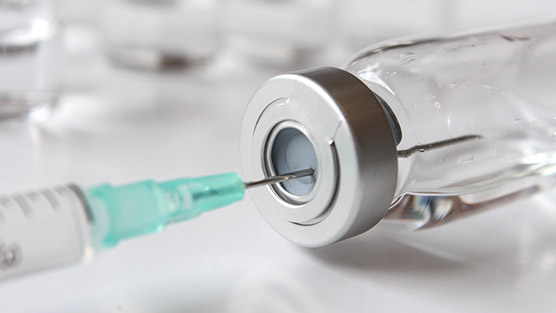
Biologic Therapy / Immunotherapy
Immunotherapy improves the body’s natural immune system in order to combat the cancer cells within the prostate as well as those that have spread. There are therapeutic cancer vaccines, checkpoint immune modulators, and adoptive T cell therapies.
RECOMMENDED FOR:
- Men with CRPC, or advanced stage cancer that has spread
- Men who have limited treatment options
PROS:
- Minimally invasive procedure
- Helps immune system respond to specific cancer cells
- Helps to enhance the immune system
CONS:
- Appetite suppression
- Dizziness
- Development of allergic reactions
- Fatigue
- Nausea

Brachytherapy (Internal Radiation Therapy)
Brachytherapy is a form of radiation treatment that utilizes radioactive pellets (or seeds) inserted directly into the prostate gland to destroy the cancer. There is permanent and temporary (high does rate) brachytherapy, which may also include some short-term hormonal therapy to help shrink the prostate.
RECOMMENDED FOR:
- Men who still have their prostate
- Men healthy enough for surgery
PROS:
- Minimally invasive procedure
- No hospitalization required
- Less damage to the tissue around the prostate compared to other radiation therapies
CONS:
- Will cause pain and swelling
- Due to radiation, may be restricted from close contact with pregnant women and children for period of time
- Due to possible movement of pellets, having to strain your urine is possible
- At risk for bowel, urine, and erectile issues
- Staging of cancer not possible from this treatment alone

Chemotherapy
Chemotherapy is the ingestion of specific drugs over weeks (depending on the stage of cancer) that enter your bloodstream to kill cancer cells. This is a method typically used when cancer has spread beyond the prostate gland and to other areas of the body. This treatment does not remove, damage, or destroy cancer cells like surgery or radiation but rather destroys both cancerous and non-cancerous cells as the drugs circulate through the body. There are various chemotherapy drugs and each will result in different side effects depending on the specific drug as well as the individual.
RECOMMENDED FOR:
- Men who have prostate cancer that has spread beyond the prostate gland to areas such as the bones, lymph nodes, or liver.
PROS:
- Decreases PSA level
- Kills cancer cells throughout the body
CONS:
- Can destroy healthy non-cancerous cells
- Fatigue
- Nausea
- Diarrhea
- Weakness
- Hair loss
- Not as likely to cure prostate cancer
- May have to take additional drugs to offset negative side effects
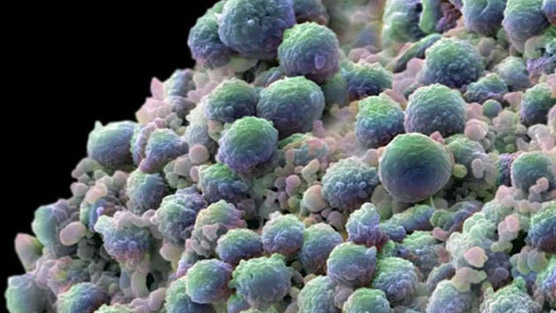
Cryosurgery (Cryotherapy)
Cryosurgery, (sometimes referred to cryoablation), is a minimally invasive surgical procedure that uses extremely cold gas to freeze and destroy the prostate. Trans-rectal ultrasound is used to map and guide needles through the area between the anus and scrotum so that the cold gases can be directed to the prostate.
RECOMMENDED FOR:
- Men with cancer in its early stages
- Men who have cancer confined to the prostate
- Men with other health issues such as diabetes, heart disease, or lung disease
PROS:
- Minimally invasive procedure
- Freezes and destroys cancer tissue
CONS:
- Freezing can also cause damage to nearby healthy cells and organs such as the urethra and bladder
- Freezing can damage nerves and cause a higher probability of erectile dysfunction
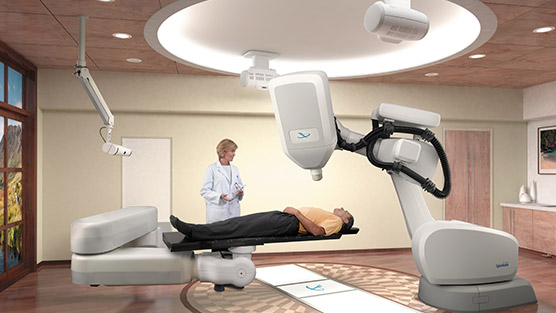
Cyberknife®
Cyberknife is one form of stereotactic body radiation therapy (SBRT) and robotic-assisted radiosurgery (not actual surgery) that utilizes a computerized robot to automatically deliver high doses of radiation to the prostate gland. Fiducials are implanted into the body so that the Cyberknife machine can adjust to movement during each treatment.
RECOMMENDED FOR:
- Men with cancer limited to the prostate
- Men with low to moderate risk prostate cancer
PROS:
- No hospitalization
- Produces low levels of toxicity
- Less pain
CONS:
- Fatigue
- 20-30% develop erectile dysfunction
- No doctor or surgeon controlling the device
- Lack of high definition internal visuals to accurately diagnose and treat prostate cancer
- Difficult to accurately stage cancer
- Multiple trips to the hospital for treatments
- Fairly new surgery resulting in a limited history to determine true long-term effectiveness
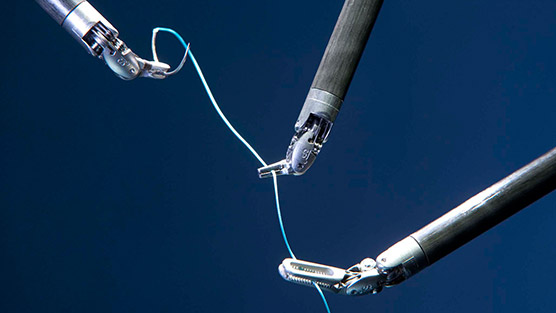
Da Vinci Robotic Prostatectomy / Robotic-Assisted Laparoscopic Radical Prostatectomy (RALRP)
Da Vinci Robotic Prostatectomy is a surgical procedure performed by a surgeon (and his/her team) with the aid of computer-enhanced robotic system. State-of-the-art technology and tools are 100% in the control of the surgeon, which allow him or her to see a magnified, high-resolution view of the operating field to safely and efficiently remove the cancerous prostate.
RECOMMENDED FOR:
- Men healthy enough for surgery
- Men with prostate cancer that has been isolated the prostate
PROS:
- High rates of curing cancer
- Results in accurate staging of cancer
- Minimal blood loss
- Less pain
- Shorter recovery times
- Shorter hospital stays (1-2 days)
- Extreme accuracy and precision of necessary surgical instruments
- High definition magnified visibility of the prostate and surrounding tissues and organs
- High rate of normal sexual function after surgery when performed by a skilled and experienced robotic surgeon
- Prostate cancer is completely removed resulting in higher cancer cure rates when performed by a skilled and experienced robotic surgeon
CONS:
- Possible erectile and urinary side effects post surgery when procedure is performed by a less-skilled and inexperienced surgeon
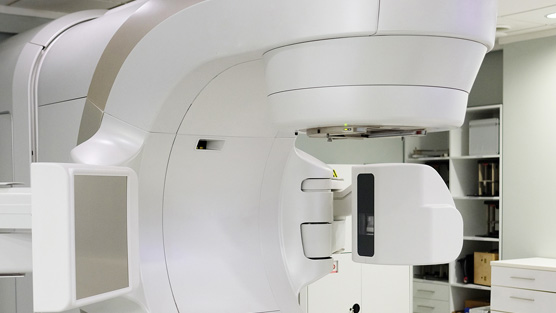
External Beam Radiation Therapy (EBRT)
External Beam Radiation Therapy is a form of radioactive treatment that targets the prostate gland with beams of radiation (x-ray or proton ray). After your prostate has been mapped and your body has been set into place by a fitted mold, shaped beams of radiation are directed at the prostate from several directions.
RECOMMENDED FOR:
- Men with early-stage prostate cancer
- Men with cancer that has spread outside of the prostate
PROS:
- No blood loss
- No hospitalization
CONS:
- Fatigue associated with radiation
- Requires countless treatments that can extend over many weeks
- Prostate is not removed which leaves the chance of recurrence
- Healthy tissue can be damaged by radiation
- Difficult to accurately stage the cancer
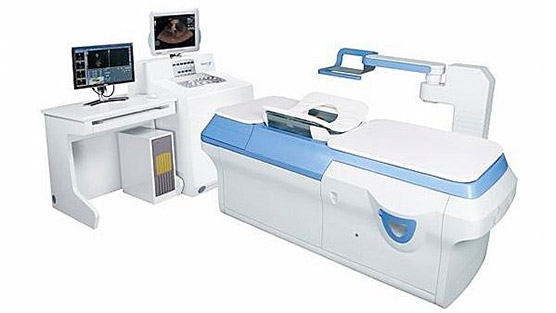
High Intensity Focused Ultrasound (HIFU)
HIFU is a treatment that delivers high frequency sound waves which creates heat to specific areas of the prostate to kill the cancer cells. A trans-rectal probe is inserted into your rectum to reach the prostate and more accurately target the prostate cancer with the strong beams. HIFU is often used as a form of salvage treatment.
RECOMMENDED FOR:
- Men with cancer confined to the prostate and has not spread elsewhere
PROS:
- Shorter hospital stays
- Noninvasive procedure
CONS:
- Prostate is not removed so it is very possible for some cancer to be left behind
- Erectile dysfunction, urinary retention, incontinence
- Not a long history of medical data to determine long term effectiveness

Hormone Therapy (Androgen deprivation/suppression)
Hormone Therapy is a form of treatment that reduces or blocks the production of male hormones (also known as androgens) in order to slow the growth of the prostate cancer. Drugs (LHRH), the infusion of female hormones (estrogens), and even surgery (castration) are forms of hormone therapy that can be exercised to reduce the level of testosterone in the blood and ultimately stop the growth of prostate cells. Hormone therapy does not kill cancer cells so this treatment is typically used before other treatments such as radiation therapy and after treatments such as a prostatectomy.
RECOMMENDED FOR:
- Men with prostate cancer that has recurred
- Men with early-stage prostate cancer with an intermediate to high risk of recurring
PROS:
- Can reduce or halt the growth of the cancer within the prostate
- Removes/reduces the androgens which are required for the prostate and prostate cancer cells to grow
CONS:
- Weight gain
- Mood swings
- Development of breasts
- Decrease in muscle mass
- Decrease in libido
- Possible erectile dysfunction
- Hot flashes
- Decrease in bone density
- Susceptible to bone fractures
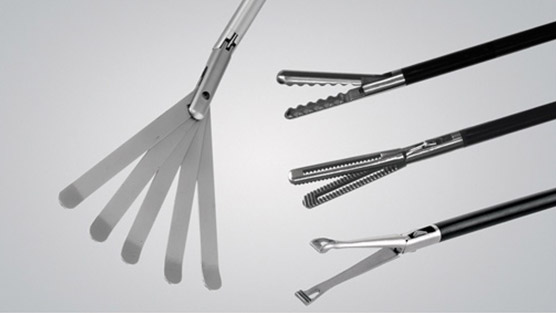
Laparoscopic Radical Prostatectomy (LRP)
Laparoscopic Radical Prostatectomy is a surgical procedure where small incisions are made in the abdomen and the cancerous prostate is removed with the use of special tools. The surgeon directly holds and maneuvers each tool by hand while using a surgical fiber optic camera to carefully navigate and perform the surgery.
RECOMMENDED FOR:
- Men who are healthy enough for surgery
- Men with cancer confined to the prostate (Stage T1 or T2 cancer)
PROS:
- Small incisions
- Less bleeding
- Less pain
- Shorter hospital stays
- Quick recovery
- Allows for accurate staging of cancer
CONS:
- If performed by an inexperienced surgeon there is an increased risk of incontinence, erectile dysfunction, and bowel issues
